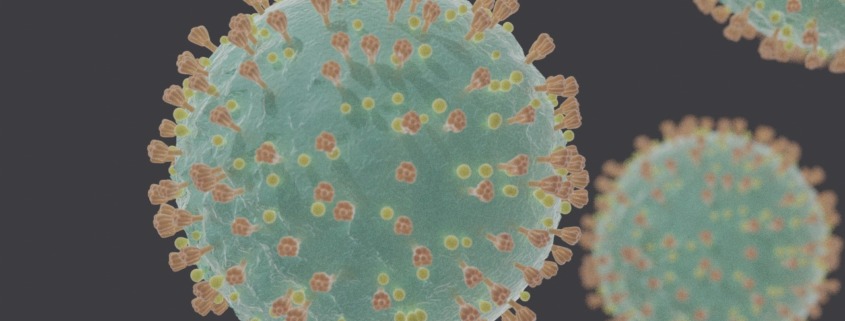- Neurological Complications of Herpesvirus Patients with SARS-CoV-2, Part II
INTRODUCTION: Carneiro et al.1, estimated the prevalence of herpesvirus in patients with COVID-19 and determined if co-infection is associated with poorer outcomes and neurological symptoms. Studies have shown that patients with neurological manifestations from a SARS-CoV-2 infection should undergo detection tests for opportunistic neurotropic viruses, such as human herpesviruses (HHVs), since therapeutic strategies are available for such infections, which can help reduce morbidity and mortality or improve disease prognosis. This study analyzed 53 patients diagnosed with COVID-19 and used quantitative polymerase chain reaction (qPCR) to identify the presence of alphaherpesviruses, betaherpesviruses, and gammaherpesviruses.
DISCUSSION: The most prevalent herpesviruses were HHV-6 (47.2%), CMV (43.4%), HHV-7 (39.6%), and HHV-8 (17%). CNS symptoms were more prevalent in patients with herpesvirus detection, with statistically significant values for HHV-6 (40% in patients with HHV-6 detected vs 1.3% in those without HHV-6 detection). HSV-1, HSV2, VZV, HHV-8 and EBV were also detected in patients who showed CNS-associated neurological symptoms. No significant association was seen when looking at either age or sex demographics. The statistical analysis of the data also showed that there were no significant association between neurological disorders with comorbidities and the use of corticosteroids. These data indicate that the state of immunosuppression in SARS-CoV-2 infection, characterized by symptoms such as lymphocytopenia, may possibly trigger a cycle of opportunistic virus reactivations, which makes it necessary to monitor the influence of these viruses on the course of COVID-19. It is interesting that this study found HHV-8 in 17% of the patients since previous studies found a low prevalence in the Brazilian population, suggesting that current serological detection methods for HHV-8 may by missing HHV-8 cases. In this study, both HSV-1 and EBV were detected in 17% and 28.3% of patients (respectively). The betaherpesviruses HHV-6, CMV, and HHV-7 showed the highest viral DNA load. Previous studies (Jumah at al2) also corroborate these findings for reactivation of HHV-6 during COVID-19. Carneiro suggests that the ability of HSV-1 and HHV-6 to cause neurological disorders during reactivation should be investigated as a possible cause of neurological changes in SARS-CoV-2 infected individuals.
CONCLUSION: The findings of this study showed that HHV detection may be underestimated, and that herpesviruses other than HSV-1, EBV, and CMV may also be associated with neurological manifestations. The results highlight the importance of investigating the role of opportunistic viruses, such as herpesviruses, in the context of COVID-19, and their influence on the prognosis and neurological manifestations in patients infected with SARS-CoV-2. In addition, future investigations should focus on the role of herpesviruses in modulating the immune system via the regulation of gene expression during SARS-CoV-2 infection in critically ill patients, since herpesviruses harbor several mechanisms for regulating the host immune system.
REFERENCES:
- Carneiro, de S.V.C., Alves-Leon, S. V., de Santana Sarmento, D. J., da Costa Nunes Pementel Coelho, W. L., da Cruz Moreira, O., Salvio, A. L., Ramos, C. H. F. R. Filho, C. H. F. R., Marques, A. B., da Costa Goncalves, J. P., Leon, L. A. A., and de Paula, V. S. (2022). Herpesvirus and neurological manifestations in patients with severe Coronavirus disease. Virology Journal 19:101. https://doi.org/10.1186/s12985-022-01828-9
- Jumah, M., F. Rahman, M. Figgie, A. Prasad, A. Zampino, A. Fadhil, K. Palmer, R.A. Beurki, S. Gunzler, P. Gundelly, and H. Abboud. (2021). COVID-19, HHV-6 and MOG antibody: A perfect storm. J Neuroimmunol. 353:577521. https://doi.org/10.1016/j.jneuroim.2021.577521


